Comparing cars, bus and bicycles
How much machinery does it take to transport 100 people by car, bus or bicycle? Check out this poster.
How much machinery does it take to transport 100 people by car, bus or bicycle? Check out this poster.
To shoot photos, or not to shoot photos; that is the question raised by Erika Price's most recent post.
During yesterday's long trip through Rocky Mountain National Park in Colorado, I often stayed away from my camera to stay in the moment, but I often just had to try to capture yet another photo, because I wanted to remember it, and my memory doesn't provide images in brilliant color. But I didn't want it all to be about capturing yet another image. It was quite a conundrum. Experience it versus photograph it. There were other conundrums too. Look at these incredible scenes wordlessly, or think about them in words while you look at it.
 What an incredible experience, to be able to walk through this incredible park, even though it was about 20 degrees and even though the wind was often howling. Down on the trails of Bear Lake, I had my first chance to walk on snow shoes. The perfect tool for the job, when you are sometimes walking on two or three feet of snow. Note: Click on any of these images for a much larger version.
My camera (a Canon SD1100IS is a consumer grade camera with photo stitch feature--most consumer cameras have this feature. I ended up taking about 10 panoramas, because a single photo just doesn't quite preserve that immense feeling of space.
What an incredible experience, to be able to walk through this incredible park, even though it was about 20 degrees and even though the wind was often howling. Down on the trails of Bear Lake, I had my first chance to walk on snow shoes. The perfect tool for the job, when you are sometimes walking on two or three feet of snow. Note: Click on any of these images for a much larger version.
My camera (a Canon SD1100IS is a consumer grade camera with photo stitch feature--most consumer cameras have this feature. I ended up taking about 10 panoramas, because a single photo just doesn't quite preserve that immense feeling of space.
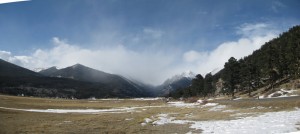 I was in Denver for a conference last week, and my trip to Rocky Mountain National Park was only for a day. Alas, I dreamed of someday staying there for a week, hiking during the day and writing at night.
I was in Denver for a conference last week, and my trip to Rocky Mountain National Park was only for a day. Alas, I dreamed of someday staying there for a week, hiking during the day and writing at night.
 Then, when I thought I had seen the most magnificent sights, today I was greeted with a brilliant sky on the way to the airport.
Then, when I thought I had seen the most magnificent sights, today I was greeted with a brilliant sky on the way to the airport.
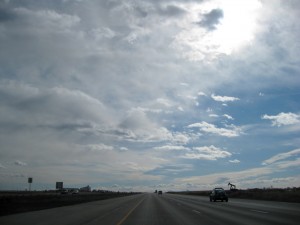
I have a charming niece named Katja Boye. She and her family are currently traveling, working and studying in various parts of West Africa. Katja recently sent my family some of her digital images; I really enjoyed the many scenes and textures and colors of Africa. I also enjoyed the contrast of seeing images of my very light-skinned relatives (they are Norwegian, with their permanent home in Norway) mingling with the many dark-skinned Africans. 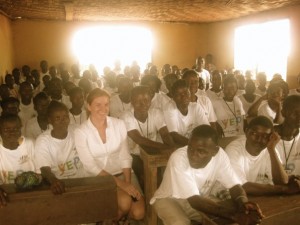 I asked Katja if she would grant me permission to share some of her photos on this website and she gave the go-ahead. I don't actually know these specific locations within West Africa yet - - perhaps Katja will write a comment and provide some further information.
Katja (she stands out in the photo to the right) is the daughter of Alida Jay Boye (my wife's sister), who you can see at the left side of the sand dune photo below. Alida is the co-author of a beautifully written and photographed book describing the people and the ancient manuscripts of Timbuktu, located in the African country of Mali. Yes, Timbuktu is a real place, it is surrounded by sand dunes, and here is an aerial shot of of the city. The title Alida's book is The Hidden Treasures of Timbuktu: Rediscovering Africa's Literary Culture. For many years, Alida has been "commuting" from Norway to Mali work on these manuscripts under the auspices of the United Nations. Here's more information about Alida's work.
I asked Katja if she would grant me permission to share some of her photos on this website and she gave the go-ahead. I don't actually know these specific locations within West Africa yet - - perhaps Katja will write a comment and provide some further information.
Katja (she stands out in the photo to the right) is the daughter of Alida Jay Boye (my wife's sister), who you can see at the left side of the sand dune photo below. Alida is the co-author of a beautifully written and photographed book describing the people and the ancient manuscripts of Timbuktu, located in the African country of Mali. Yes, Timbuktu is a real place, it is surrounded by sand dunes, and here is an aerial shot of of the city. The title Alida's book is The Hidden Treasures of Timbuktu: Rediscovering Africa's Literary Culture. For many years, Alida has been "commuting" from Norway to Mali work on these manuscripts under the auspices of the United Nations. Here's more information about Alida's work. 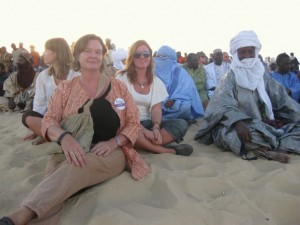 I don't claim to be able to read any of these manuscripts, but I do enjoy their physical beauty, which you can see here.
Those who can read the manuscripts recognize them to be a vast literary treasure created by Africans and collected by various people and institutions in Timbuktu, which for centuries served as a commercial crossroads in Africa. For more on Timbuktu and its famous manuscripts, consider this informative video.
Katja's father Thorvaldt (who works in a diplomatic capacity for the Norwegian government regarding several west African countries) and her sister Ebba (a student) have also spent considerable time working and studying in various parts of Africa. As you can see, the members of this family are quite comfortable traveling far from their cold homeland of Norway to warm Africa.
Click on the title to this post for the permalink version, which will allow you to see all 18 images.
Katja - thanks for letting me share these photos!
I don't claim to be able to read any of these manuscripts, but I do enjoy their physical beauty, which you can see here.
Those who can read the manuscripts recognize them to be a vast literary treasure created by Africans and collected by various people and institutions in Timbuktu, which for centuries served as a commercial crossroads in Africa. For more on Timbuktu and its famous manuscripts, consider this informative video.
Katja's father Thorvaldt (who works in a diplomatic capacity for the Norwegian government regarding several west African countries) and her sister Ebba (a student) have also spent considerable time working and studying in various parts of Africa. As you can see, the members of this family are quite comfortable traveling far from their cold homeland of Norway to warm Africa.
Click on the title to this post for the permalink version, which will allow you to see all 18 images.
Katja - thanks for letting me share these photos!
For the past five days I've been visiting my wife's family on the north shore of Long Island. I haven't written much during the visit, but I've been thinking a lot and jotting down lots of ideas. I've also been taking quite a few photos, which I'd like to share. 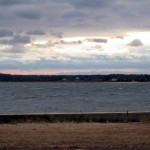 Most of my trip was spent within a stone's throw of Long Island Sound. The temperature ranged from the 40's to the low 60's and the wind was often gusty.
Here is a shot of Long Island Sound in the early evening. This is looking north toward Connecticut from Long Island. During the day, flocks of geese will honk and fly in formation, more or less.
Most of my trip was spent within a stone's throw of Long Island Sound. The temperature ranged from the 40's to the low 60's and the wind was often gusty.
Here is a shot of Long Island Sound in the early evening. This is looking north toward Connecticut from Long Island. During the day, flocks of geese will honk and fly in formation, more or less.
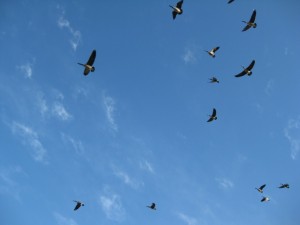 One of my favorite things to do out east is to spot horseshoe crab shells. The crabs themselves are large (about two feet long including the tail), majestic and ancient creatures.
One of my favorite things to do out east is to spot horseshoe crab shells. The crabs themselves are large (about two feet long including the tail), majestic and ancient creatures. 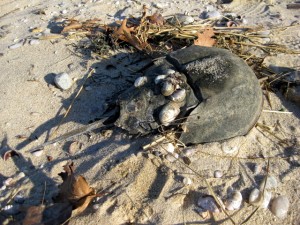 How ancient? They've been around for more than more than 400 million years in pretty much the same form as we see them today. In other words, if you could be transported back in time to spot each of the various types of dinosaur, you would always be able to see horseshoe crabs that look just like these. Here is a lot more about these creatures from Wikipedia.
Fall is that time of year for many living things to go into dormancy. This is certainly true of many types of trees. It is true of apple trees, for instance. I took this photo at Richter's Apple orchard.
How ancient? They've been around for more than more than 400 million years in pretty much the same form as we see them today. In other words, if you could be transported back in time to spot each of the various types of dinosaur, you would always be able to see horseshoe crabs that look just like these. Here is a lot more about these creatures from Wikipedia.
Fall is that time of year for many living things to go into dormancy. This is certainly true of many types of trees. It is true of apple trees, for instance. I took this photo at Richter's Apple orchard.
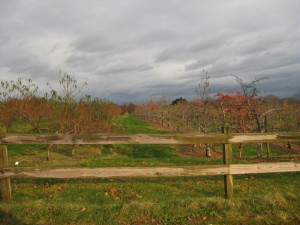 The apples have been harvested, and the Richter family, who has owned this orchard since 1938, is still busy selling mouth-watering apples of many varieties.
It is only in the Fall that one can spot the intricacies of the skeletal structures of trees, including this beautiful specimen. It is hard to know exactly what is going on under those leaves, until it's Autumn.
The apples have been harvested, and the Richter family, who has owned this orchard since 1938, is still busy selling mouth-watering apples of many varieties.
It is only in the Fall that one can spot the intricacies of the skeletal structures of trees, including this beautiful specimen. It is hard to know exactly what is going on under those leaves, until it's Autumn.
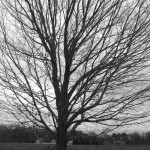 But it is the Long Island Sound that attracts me the most when I am on Long Island. The Sound has a special attraction in the moonlight, and when various members of my wife's family gathered on the north shore a few nights ago, I worked fairly hard to take long-exposure photos of the silhouetted family members enjoying the waves and water and the smells and sounds of the ocean water of Long Island Sound.
But it is the Long Island Sound that attracts me the most when I am on Long Island. The Sound has a special attraction in the moonlight, and when various members of my wife's family gathered on the north shore a few nights ago, I worked fairly hard to take long-exposure photos of the silhouetted family members enjoying the waves and water and the smells and sounds of the ocean water of Long Island Sound.

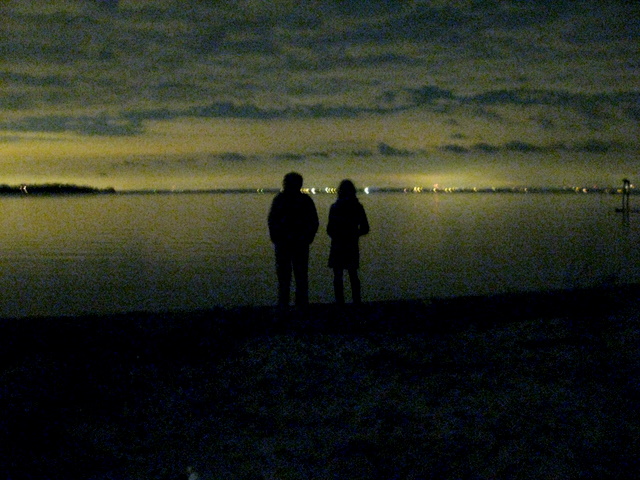
A friend of mine, a 19-year old man named Johnny Simon, recently returned from a month-long trip to visit his extended family in northern Lebanon. He gave me permission to publish the following photos, all of them taken along the Qadisha Valley. 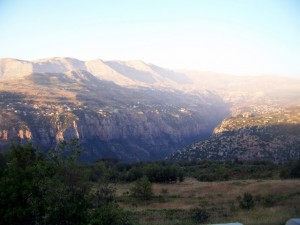 Based on Johnny's stories and photos, this area is a magic and peaceful place populated by a highly religous group of people.
As I viewed his entire slide show, I couldn't help but notice the lack of commercialization. Johnny described how many of the people obtain significant amounts of their daily food by going out and picking the fruit fresh from trees.
Based on Johnny's stories and photos, this area is a magic and peaceful place populated by a highly religous group of people.
As I viewed his entire slide show, I couldn't help but notice the lack of commercialization. Johnny described how many of the people obtain significant amounts of their daily food by going out and picking the fruit fresh from trees. 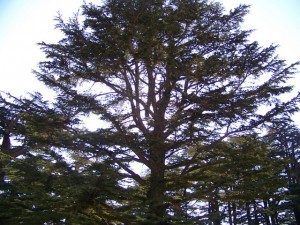 [The five photos included in this post were taken by Johnny, and he has provided the brief comments for each photo]
Top, Inset: A view of Bsharre, birthplace of Khalil Gibran.
[top right: The Qadisha Valley, or valley of the saints, served as refuge for Lebanese Christians for hundreds of years. Even today, one cannot look upon the valley and still not be in awe. Here it is seen from a surrounding village. ]
Johnny indicated that there are approximately 30,000 churches along the Qadisha Valley, many of them small and carved into the cliffs.
Above: The mighty cedars of lebanon have stood for thousands of years. This cedar rests in the forest of God near the Qadisha valley.
A bit of background: After a long period of peace, Lebanon suffered a terrible civil war from 1975-1990. My friend is a Maronite Catholic--40% of the country is Christian, while 60% is Muslim. Many of the Christians left Lebanon as a result. Then, after another long period of relative peace, Lebanon was the site of the one month long 2006 Lebanon War between the Israeli military and Hezbollah. Johnny was told by his relatives that during this attack, the Israelis intentionally destroyed large sections of the cedar forests, knowing that the cedar tree is a national symbol of Lebanon.
[The five photos included in this post were taken by Johnny, and he has provided the brief comments for each photo]
Top, Inset: A view of Bsharre, birthplace of Khalil Gibran.
[top right: The Qadisha Valley, or valley of the saints, served as refuge for Lebanese Christians for hundreds of years. Even today, one cannot look upon the valley and still not be in awe. Here it is seen from a surrounding village. ]
Johnny indicated that there are approximately 30,000 churches along the Qadisha Valley, many of them small and carved into the cliffs.
Above: The mighty cedars of lebanon have stood for thousands of years. This cedar rests in the forest of God near the Qadisha valley.
A bit of background: After a long period of peace, Lebanon suffered a terrible civil war from 1975-1990. My friend is a Maronite Catholic--40% of the country is Christian, while 60% is Muslim. Many of the Christians left Lebanon as a result. Then, after another long period of relative peace, Lebanon was the site of the one month long 2006 Lebanon War between the Israeli military and Hezbollah. Johnny was told by his relatives that during this attack, the Israelis intentionally destroyed large sections of the cedar forests, knowing that the cedar tree is a national symbol of Lebanon.